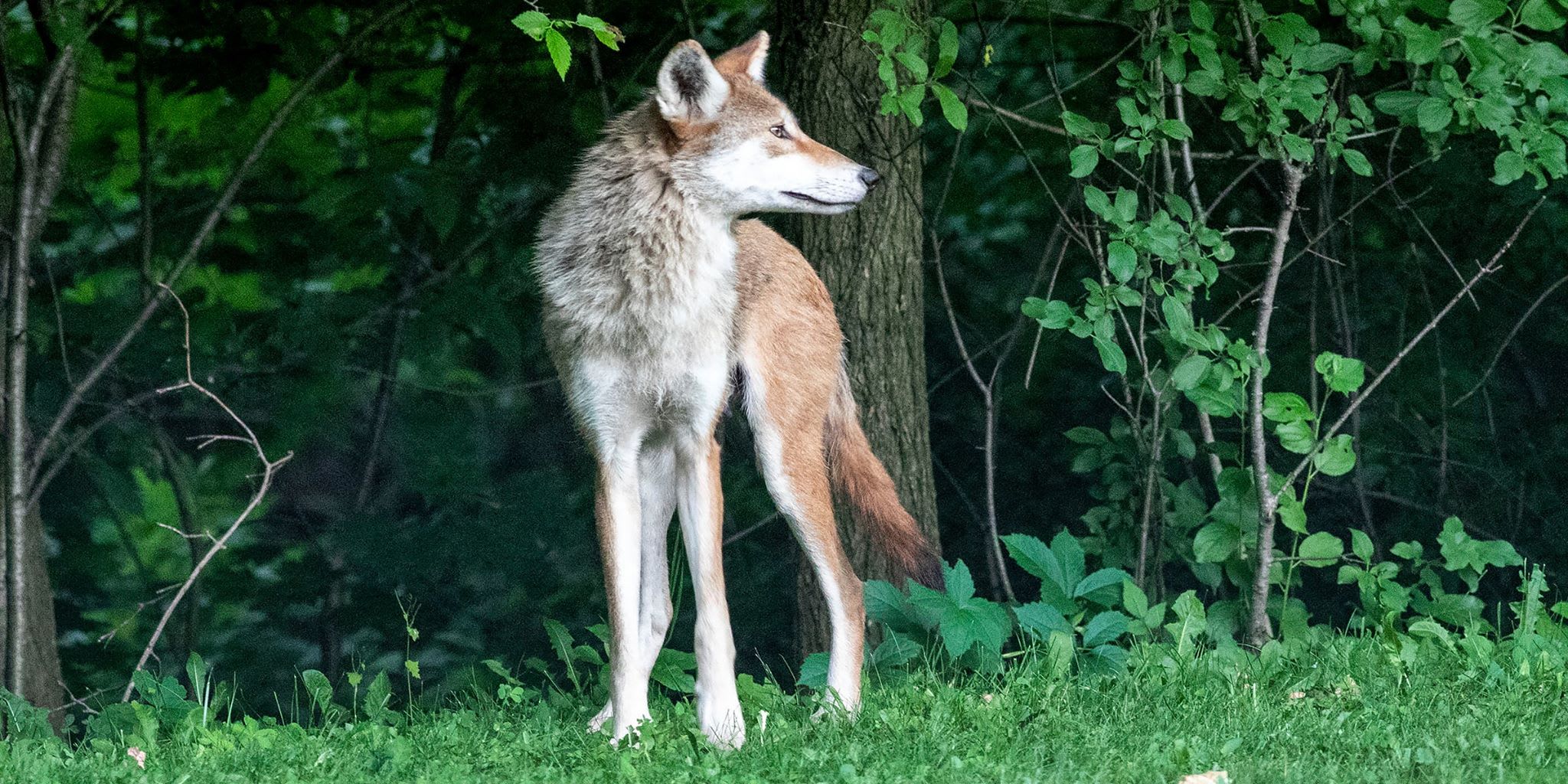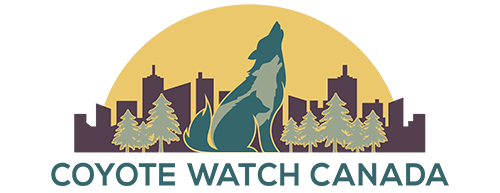
About Coyotes
Incredibly beneficial to the natural ecosystem, coyotes today are considered a "keystone species". They help keep small mammal and rodent populations in check. They are often referred to as "nature’s cleanup crew". Coyotes are devoted parents and diligent protectors of their offspring. They mate for life and have significant family bonds. While coyotes typically avoid humans. Intentional or unintentional feeding may change a coyote’s proximity tolerance, resulting in them approaching people or yards. Establishing safe and appropriate boundaries is a critical part of restoring a coyote’s natural instinct to not approach humans. For more information about coyote coexistence please review this link.
Aversion Conditioning (AC) Humane Hazing Overview
AC is not a new technique. It has been used worldwide with various species, including bears and tigers. In a nutshell, hazing is a method of negative association that safely compels a coyote to move away from humans, sometimes through the use of deterrents. These techniques can restore a coyote’s natural avoidance of humans and minimize interactions. Communities that employ basic hazing techniques experience measurable results while educating and empowering themselves. It is important to remember that each coyote may have a different “food education”. Some coyotes have been taught that people (and their properties) are an easy-access food source. These anthropogenic attractants are not beneficial (e.g. direct feeding, composts, bird feeder overflow, photographer baiting.) Hazing a coyote can effectively change their behaviour, although a coyote may have to be hazed multiple times before they move away for good. Indifference is not an adequate response. These AC techniques are lifelong tools, which will ensure that future coyotes do not develop these behaviours. Please remember, hazing is a technique that must be used as part of an overall coexistence program that addresses other issues (e.g. investigating food sources.)
Basic Hazing Techniques
✓ Stand tall, make yourself big, shout (don’t scream) and wave your arms while approaching the coyote until he/she runs away
✓ Noisemakers: your voice, air horns, pots, and pans banged together, whistles, shake cans (pop cans filled with pennies or pebbles), keys, pop open/close an umbrella
✓ Projectiles (TOWARDS, NOT AT THE intended target): sticks, clumps of dirt, small rocks, tennis balls
✓ Liquid - water-only (during warm months only): garden hoses, water balloons - NEVER use any caustic fluids such as vinegar. This would be considered an animal welfare and cruelty concern.
Note: If a coyote has never been hazed, he/she may not run away immediately just by you firmly communicating. You may need to approach the coyote and incorporate some of the above-mentioned deterrents. If the coyote runs a distance and then stops to look at you, you must continue to haze the coyote until he/she completely leaves the area. To review our AC pamphlet click here
For communities experiencing regular sightings, patience is required when identified "hot spots" may need more intensive investigations and hazing before the coyote entirely moves on. First responders can be trained to follow up with residents, respond to calls and utilize more intensive hazing techniques if needed. Please contact us if interested in our training: info@coyotewatchcanada.com
Always put safety first.
• Never run from any canine, including dogs, foxes, wolves, and coyotes.
• Always provide an escape route for wildlife, never corner them.
• Never approach sick or injured wildlife. Call an experienced rescue team and rehabilitator for advice.
- NEVER approach den areas, rendezvous sites (a "safe zone" where parents leave the pups while they forage and hunt), food sources
- Always keep pets under the direct control of a caregiver and leash when recreating outdoors.
- Do not allow a free-roaming pet to chase or harass wildlife
To learn more about Aversion Conditioning (humane hazing) please see the following paper: Advancing Best Practices for Aversion Conditioning (Humane Hazing) to Mitigate Human–Coyote Conflicts in Urban Areas
Recommended citation:
Sampson, Lesley and Van Patter, Lauren (2020) "Advancing Best Practices for Aversion Conditioning (Humane Hazing) to Mitigate Human–Coyote Conflicts in Urban Areas," Human–Wildlife Interactions: Vol. 14: Iss. 2, Article 7.
DOI: https://doi.org/10.26077/5cbf-f8f9
Available at: https://digitalcommons.usu.edu/hwi/vol14/iss2/7

